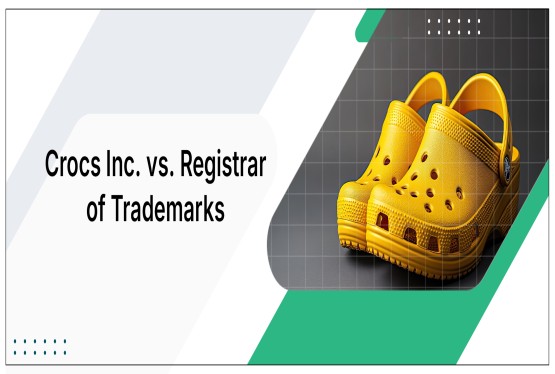In the Indian trademark system, maintaining and modifying trademark rights involves various procedural filings, each designated by a specific form under the Trade Marks Rules, 2017, framed under the Trade Marks Act, 1999. Among these, Form TM-M and Form TM-P are two of the most frequently used forms during the post-filing and post-registration phases of a trademark’s lifecycle. While both forms serve distinct functions, they are often misunderstood or misused interchangeably. This article provides an in-depth comparison of Form TM-M and Form TM-P, outlining their purposes, legal contexts, applicable scenarios, statutory backing, documentation requirements, and government fees.
Trademarks form TM-M and TM-P
Trademark forms in India are designed to procedural compliance and legal formalities for applications, modifications, and post-registration changes. Each form corresponds to specific rules and sections under the Trade Marks Act, 1999.
Two such essential forms are:
-
TM-M: A “Miscellaneous Form” used for various administrative or procedural modifications during or after the trademark application process.
-
TM-P: A “Post-Registration Form” meant to record changes in ownership or rights concerning a registered trademark.
What is Form TM-M?
Purpose of TM-M:
TM-M stands for “Miscellaneous,” and, as the name suggests, it serves various non-ownership-related purposes such as amendments in application details, requests for correction of clerical errors, and other procedural tasks.
Common Use Cases:
-
Correction or change in the name or address of the applicant/proprietor
-
Amendment in the trademark application (word, logo, or class of goods/services)
-
Request for conversion of convention application into a national application
-
Filing amendments related to limitation or disclaimer
-
Restoration of removed trademarks due to non-renewal (under Section 25)
-
Filing request for expedited examination
-
Submission of evidence, Trademark withdrawal application, or reply to show cause
Relevant Legal Provisions:
-
Section 15: Correction and amendment of application
-
Section 22: Correction of clerical errors
-
Section 25: Renewal and restoration
-
Rule 10 of the Trade Marks Rules, 2017
Documents Typically Required:
-
Signed request letter
-
Authorization letter (if filed by an agent)
-
KYC documents of the applicant
-
Supporting affidavit (if change in ownership name format needs justification)
What is Form TM-P?
Purpose of TM-P:
TM-P is the designated form for making post-registration changes to the trademark. It primarily deals with the assignment, transmission, licensing, or cancellation of rights relating to a registered trademark.
Common Use Cases:
-
Assignment or transmission of a registered trademark
-
License registration: Granting user rights to another person or entity
-
Cancellation or modification of a registered user
-
Change in the details of a registered user
-
Surrender of trademark in respect of some goods/services
-
Rectification of the Register under Section 57
Relevant Legal Provisions:
-
Section 37–45: Assignment and transmission
-
Section 48: Registered user
-
Section 50: Cancellation of registration
-
Section 57: Rectification of the Register
-
Rule 75 of the Trade Marks Rules, 2017
Documents Typically Required:
-
Duly executed assignment deed or license agreement
-
Affidavit in case of voluntary surrender
-
Consent of the registered proprietor (for licensing)
-
Power of attorney
-
KYC documents of assignor and assignee
Comparative Table: TM-M vs TM-P
|
Feature |
Form TM-M |
Form TM-P |
|
Full Form |
Miscellaneous Form |
Post-Registration Form |
|
Used For |
Procedural corrections, changes, general modifications |
Assignments, licensing, transmission, cancellation |
|
Stage of Use |
During or after application, before registration |
After registration |
|
Ownership Changes |
Not applicable |
Primary purpose |
|
Legal Provisions |
Sections 15, 22, 25 |
Sections 37 to 45, 48, 50, 57 |
|
Relevant Rule |
Rule 10 |
Rule 75 |
|
Examples |
Change in name/address, amendment in application |
Transfer of ownership, registering licensee |
|
Documents Required |
Request letter, KYC, affidavit (if needed) |
Assignment deed/license agreement, affidavits, KYC |
|
Effect on Trademark Registry |
Changes only application-related details |
Updates the trademark register reflecting legal ownership |
Conclusion
Both TM-M and TM-P are critical forms within the Indian trademark ecosystem, serving distinct yet essential roles. TM-M is a catch-all form for procedural updates, while TM-P governs legal ownership and rights transitions post-registration. Understanding when and how to use these forms not only ensures legal compliance but also avoids unnecessary delays and objections from the Trademark Registry. Whether you are a trademark holder, legal professional, or business owner, proper use of these forms is key to maintaining the strength and enforceability of your brand in the Indian market. For expert assistance in filing TM-M or TM-P or preparing trademark assignment deeds and affidavits, consider consulting a trademark attorney or professional service provider.






























_(b)_of_the_Trademark_Act,_1999_(1)_crop10_thumb.jpg)



_crop10_thumb.jpg)




























_crop10_thumb.jpg)
_crop10_thumb.jpg)






_crop10_thumb.jpg)








_crop10_thumb.jpg)



_crop10_thumb.jpg)





























_crop10_thumb.jpg)

















_crop10_thumb.jpg)






_crop10_thumb.jpg)












































































































































_crop10_thumb.jpg)




































_crop10_thumb.jpg)












_crop10_thumb.jpg)




























